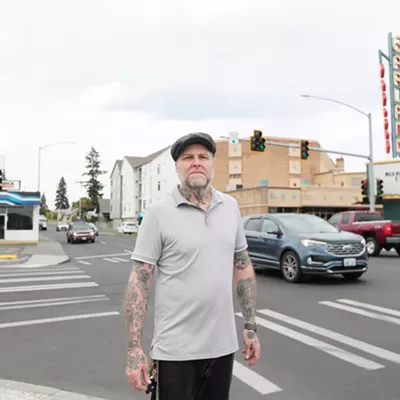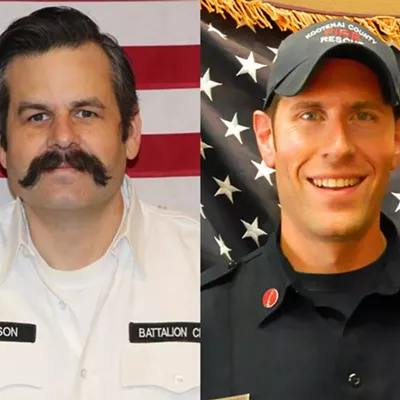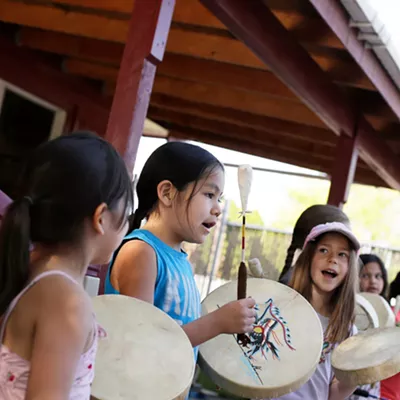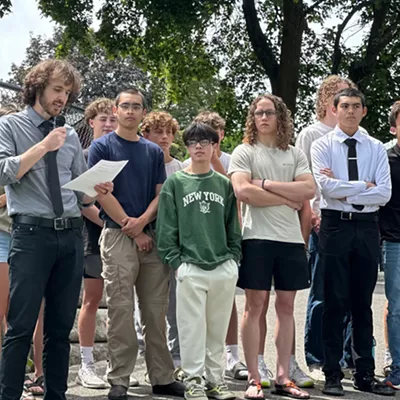Time was, snowboarding had a little image problem. Its participants were alternately seen as slackers with a limited vocabulary and ill-fitting clothes or as badly behaved, hyper-caffeinated punks. For a while, skiers had a hard time sharing the mountain with them and resorts were slow to embrace them. Their stereotyped image provided easy joke material for the old or uninitiated. Here's a sample of primitive snowboard humor:
Q: What's the difference between mutual funds and snowboarders.
A: Mutual funds eventually mature and generate income.
Or, Q: What do you call a snowboarder without a girlfriend?
A: Homeless.
n its 36-year history, the snowboard evolved from a $10 supermarket toy called the Snurfer (billed as the "Hoola Hoop of wintertime") to a vehicle for an alternative youth culture complete with its own fashion, music, attitude and values. As it continues to grow in popularity, however, snowboarding is becoming less an image-forming lifestyle and more just something that a lot people like to do.
In other words, snowboarding has hit the mainstream. Last year, 7.1 million people went snowboarding in the United States, and it continues to be the fastest-growing sport in America. Its introduction as a medal sport in the 1998 Olympics at Nagano, Japan, offers further proof of its mass acceptance. It will return to the 2002 Winter Olympics at Salt Lake City with two events, the halfpipe and the parallel giant slalom. Many universities now have collegiate snowboard teams. In fact, Walla Walla is home to the national champions of snowboarding after the Whitman College team beat mighty Penn State last winter (Go, Missionaries!).
Snowboarders made up 28 percent of the customers at ski resorts nationwide last year. Locally, the numbers are much higher. "It's about 50-50," says Danielle Bailey at Silver Mountain. "There's just as many snowboarders as skiers."
Tom Fortune, mountain manager at Schweitzer, says snowboarders make up about 35 to 40 percent of their overall business. "It's been a boost to our whole industry. It's definitely grown; it's a huge part of our business."
At first, skiers had a laundry list of gripes about their presence on the hill. They rode too fast, they were too dangerous, they were rude, they hogged the chairlift and why were they always sitting around in the snow in little herds like that? Ski resorts could no longer ignore the number of dollars snowboarders represented and have long since rolled out the red carpet for them. Ski resorts now downplay the division between skiers and snowboarders with the all-inclusive term "snowriders."
"I like to think of it as one big happy family," says Fortune. "We're seeing a lot more crossover between the two disciplines; it's stopped the us-versus-them mentality." Even the snow phone has replaced the familiar, "Good morning skiers!" with "Good morning skiers and riders!"
ll area resorts now have terrain parks that feature different man-made obstacles like rail slides, quarter pipes, tabletops and different jumps all for the goal of catching some air and doing some tricks.
"Since we put in the terrain park, it's helped a lot," says Randy Chambers, operations director at Mount Spokane. "We don't have as many people going out and building their own jumps and features."
The number of features and the quality of the terrain park is based in large part on the amount of snow: The more snow, the more features. Schweitzer and Silver Mountain have both invested in the big equipment needed to cut halfpipes, which are the popular U-shaped gullies used for tricks.
"Slowly but surely, we're starting to catch up to Colorado and Utah and these places," says Jeff Boger, owner of the Ground Zero board shops in Coeur d'Alene and Sandpoint. "That's where all their money comes from is these terrain parks. They sell their own separate passes just to the terrain park."
The latest craze, which started last year, are the snowskate parks. Snowskates are basically like a skateboards without wheels that slide on snow. They're much smaller than snowboards and are ridden without bindings, allowing flip tricks and other moves familiar to skateboarders. One attraction of snowskates is the price: they start at $50.
"We have a lot of requests for them," says Boger. "It's definitely something that's taken off for us. They're something you can use around town on the days when the kids can't get to the ski hill. We're waiting for another shipment to come in, and soon as they show up, they're basically spoken for. It's not a problem selling them; it's a problem keeping them in stock," says Boger.
While it's true that the majority of snowboarders are teenage males (the median age for snowboarders is 15.7 compared to 30.1 for skiers), Boger says the demographics are starting to change.
"For us, it's definitely grown into a much bigger audience than we thought it would be. We started out pretty kid-oriented, but we see a lot more dads and full families coming into it. It's pretty amazing," says Boger, who also has a rental shop at Schweitzer. "Once or twice every year, there's always that couple in their 60s or 70s who've skied their whole life and they say it just looks fun and they want to give it a shot. A lot of them get hooked on it. The people who were snowboarders and were punk asses now are in their 30s and 40s and have kids. There's second and third generations now. It's not going away."
or anyone thinking about snowboarding for the first time, there are a couple things to know. There are two primary styles of snowboarding, both of which may or may not require their own specific gear, depending on who you talk to:
FREESTYLE: This is what they're doing at the terrain parks. Freestyle focuses on jumps, tricks, rail slides and halfpipes. Freestyle equipment uses a soft boot and a shorter, more maneuverable board.
FREERIDE/CARVING: Freeriders prefer long descents, making S turns on open terrain in the backcountry away from the crowds. The ultimate freeride was performed by a young Frenchman last May when he became the first person to descend Mount Everest on a snowboard. He rode from the 29,029-foot summit to a base camp at 20,997 feet for a total descent of 8,032 feet in less than two-and-a-half hours. We suggest not doing that.
We do suggest, however, taking a lesson as the best way to get started. Your first time on a board can be rough, so be prepared to spend a lot of time falling. Prepare to be discouraged because even once you learn the basics, the learning curve is still steep. For skiers who are used to facing forward down the mountain, standing sideways on a board may seem a little awkward.
All area resorts rent snowboards and offer lessons. Even though there are several styles of boards, Boger says most people just use one good all-around board. "Basically, most people take the lift to the top, ride down and then hit the terrain park. You pretty much hit everything in one run."
In the last couple years, the trend has been moving toward the backcountry and opening up terrain that was formerly out-of-bounds.
"The whole industry is getting away from wide-groomed runs, trying to expand off into the trees," says Mount Spokane's Chambers. "It's the difference between driving on a country road and driving on a freeway."
Last year, Schweitzer opened up 150 new acres of backcountry glades called Northwest Territory to go along with its new six-person Stella chairlift. Fortune says riding through the trees is perfect for intermediates. "People are in for a treat. It's really neat terrain out there."
Boger, who says he's had more requests for backcountry gear like snowshoes, shovels, probes and transceivers, sees the same trend. "Once it's tracked down at the resort, people are looking for freshies elsewhere. Films glorify it. Snowboard movies are all basically backcountry. They drive the industry. What people see on the films is what ends up happening."
As the rapid evolution of snowboarding continues and the tricks get bigger and people get further into the backcountry, Boger says he sees a lot more people crossing over and using all methods of sliding down the slopes. Snowboarding is just another way to do it.
"Basically, in the end it's all about making S-turns in the snow, whether you're doing it on one or two. It's basically the same sensation. Everyone's just looking to get a little weightless feeling."















